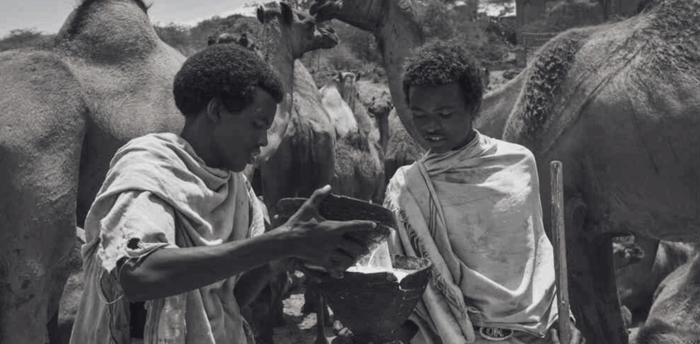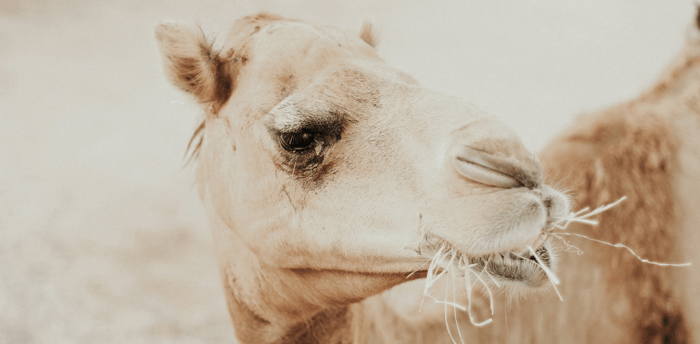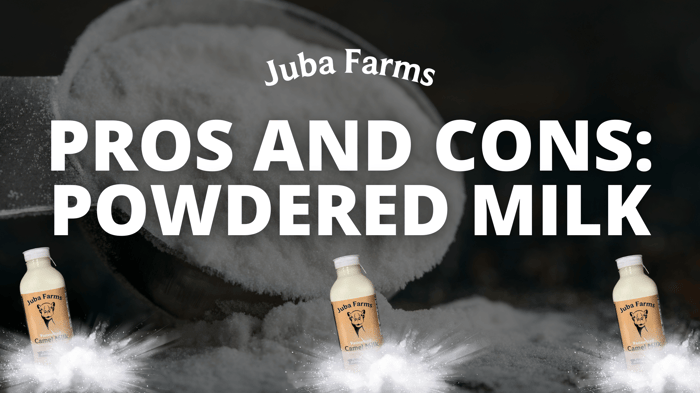Table of Contents
Before modern conveniences and refrigeration, survival in some of the world’s harshest environments demanded more than just resilience—it required deeply rooted knowledge of natural resources. Among nomadic communities in arid and desert regions, one such resource stood out as both food and medicine: camel milk. Nomads all over the world survived on camel milk.
For centuries, nomadic tribes in regions like the Arabian Peninsula, North Africa, and Central Asia survived on camel milk for extended periods. This wasn't just a cultural practice—it was a matter of life and endurance. In this article, we’ll explore how people truly survived on camel milk, the nutritional science behind it, and what modern readers can learn from this ancient tradition.

The Nomadic Way of Life
In East African countries like Somalia, Ethiopia, and Kenya, as well as across the Arabian Peninsula and Central Asia, nomadic groups have long relied on camel milk for survival. These communities moved across semi-arid and desert regions with their herds, guided by rainfall patterns and the availability of pasture.
Nomadic groups traditionally moved across vast desert landscapes with their herds, following rainfall patterns and the availability of grazing land. Camels, known as the "ships of the desert," were vital to this lifestyle. Not only did they carry loads and provide transportation, but they also supplied sustenance in the form of milk.
When food was scarce or unavailable, camel milk served as the primary source of nutrition—sometimes for days or even weeks on end. These survival periods have been well documented in historical accounts and oral traditions passed down through generations.
Why Camel Milk?
You might wonder: why camel milk, and not something else? The answer lies in the milk’s unique composition. Camel milk is different from cow, goat, or sheep milk in many ways. It is lower in lactose and richer in essential nutrients, making it more tolerable and beneficial during periods of fasting or limited food access.
Here are a few reasons why people survived on camel milk:
High water content: Helps hydrate the body, especially crucial in desert climates.
Balanced nutrition: Contains proteins, fats, and carbohydrates in just the right balance for energy and sustenance.
Rich in micronutrients: Iron, zinc, potassium, and vitamin C are all found in meaningful quantities.
Contains insulin-like proteins: Which may help balance energy levels during long gaps between meals.
Sustaining Long Journeys
Nomads didn’t just consume camel milk out of necessity—they relied on it for energy, immunity, and hydration. A typical day in a desert crossing might involve nothing more than a few gulps of fresh camel milk, straight from the source. It wasn’t uncommon for entire families to survive on camel milk alone while traveling between settlements.
In many Bedouin cultures, elders often spoke of surviving entire weeks with little more than camel milk and dates. It was a compact diet, but one that worked.
Camel Milk as a Complete Food
So, how exactly did people survive on camel milk without suffering malnutrition?
Camel milk is considered close to a "complete food" because it offers most of the essential nutrients the human body needs. While it lacks sufficient calories or fiber to serve as a long-term sole diet in today’s understanding of complete nutrition, it was more than enough to sustain energy and life in extreme conditions for limited periods.
Some key nutritional highlights include:
High-quality protein: Easily digestible and rich in all essential amino acids.
Immunoglobulins and enzymes: Support natural immunity, critical in desert environments with minimal medical access.
Fatty acids: Includes healthy unsaturated fats that aid metabolism and brain function.
Probiotic properties: Camel milk has natural antimicrobial properties that may support gut health.

Cultural Significance
In nomadic societies, camel milk wasn’t just food—it was sacred. It symbolized life, resilience, and survival. It was also used in rituals, healing practices, and hospitality traditions.
To offer a guest a cup of fresh camel milk was a sign of honor and generosity. This tradition still holds in many parts of the Middle East and Africa today.
Preparation and Consumption
Camel milk was typically consumed raw and fresh, straight from the camel. Because camels can produce milk for extended periods (sometimes up to 18 months after calving), families maintained a relatively stable supply even in difficult seasons.
In some cultures, camel milk was fermented into a yogurt-like drink for preservation or mixed with herbs for medicinal purposes. It was rarely boiled or altered, as raw milk was believed to preserve its full strength and nutritional value.
Modern-Day Perspectives
Today, camel milk is gaining global attention not just for its unique taste and health benefits, but also because of its historical role in sustaining life in extreme conditions. Learning how entire communities survived on camel milk reminds us of the power of nature and tradition.
Nutritional scientists and anthropologists alike have taken interest in camel milk for its rich biochemical profile and resilience-building properties. Although most of us have access to a wider range of foods, camel milk still serves as a valuable supplement, especially for those with sensitivities to cow dairy.
Survived on Camel Milk: Fact, Not Folklore
The phrase "survived on camel milk" isn’t a catchy slogan or marketing myth. It reflects generations of real-life experiences from people who faced the harshest environments on earth with little more than their wits, their camels, and a deep knowledge of what nature provided.
Even today, nomadic and pastoralist groups in places like Somalia, Sudan, and Mongolia rely on camel milk during dry seasons and long migrations. It remains a cornerstone of their food security strategies.
What We Can Learn
The lessons here are about more than just milk. They’re about sustainability, adaptability, and respecting time-tested knowledge. Camel milk shows us how people used natural resources intelligently to survive, thrive, and build communities in the most challenging terrains.
So next time you pour yourself a glass of camel milk or stir it into your coffee, take a moment to reflect on its origins. What you’re holding is more than a trendy drink. It’s a piece of living history—a food that literally helped people survive.
Final Thoughts
Nomadic tribes didn’t just get by on camel milk—they endured, traveled, and built families and cultures around it. From hydration to nutrition, camel milk served every need. Today, we can still appreciate this ancient wisdom and the remarkable story behind how people survived on camel milk.
Curious to experience it for yourself? Juba Farms offers 100% pure camel milk from U.S. farms.








